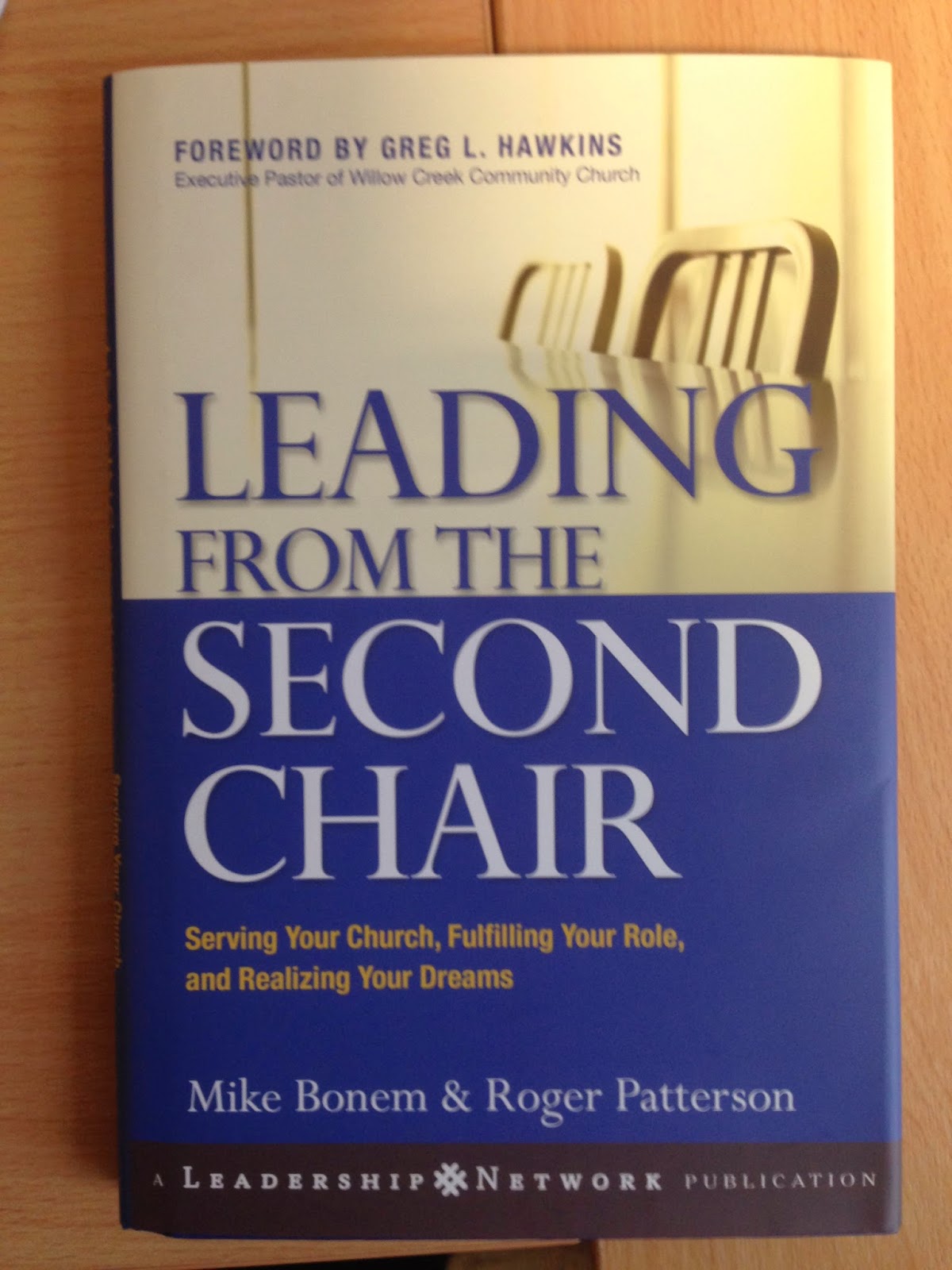Leading from the Second Chair
Review of Mike Bonem and Roger Patterson, Leading from the Second Chair: Serving your Church, Fulfilling your
Role, and Realizing your Dreams (Jossey-Bass, 2005).
I had heard much about this book before I read it, and it
did not disappoint. This is a common
sense and helpful approach to being a leader when you are not in the position
of power and control in an institution.
As an account of leadership, it recognises the leadership of an
individual, is responsible in terms of the needs of the organisation and
intentional in helping people to own what they are doing. As a second chair leader in two different
roles within the Church, and as a former first chair leader, I found this
helpful. As someone responsible for the
development of clergy, I will often turn to this as a resource.
Bonem and Patterson organise their reflections around three
paradoxes. Each reflects some of the
tension of being a leader but not being in charge. The first hits this head on; it is the
paradox of ‘Subordinate – Leader’. Here
they point to the importance of the relationship between the first-chair and
second chair leaders. Trust and respect
are important. Time spent (by both first
and second chair leaders) in building this relationship is important. The other feature of this paradox is that of
living with ‘the line’. ‘The line’ is
how responsibilities and authority are defined in the relationship between
first and second chairs. It needs to be
found, because it is not simply written in a role description. It should not be crossed, and when it is
there is an erosion of trust between first and second chair. The line can be moved, but only with time and
trust. ‘The line’ is essential the
boundaries of the relationship between first and second chair. Some of this is based on role, but much is
based on the personal needs of the individuals.
The second paradox is that of ‘deep – wide’. It defines the nature of a second chair leader.
Those in the second chair need to be spread widely through the
organisation, offering leadership throughout.
But they (unlike the first chair) will have specific areas that they
need to know in depth. This is, simply,
hard work. It means seeing the big
picture and always working in that light.
It means detailed attention to specific areas for which the second chair
leader is responsible. Priority must be given
to supporting the first chair leader and to thinking of the whole organisation
ahead of any specific tasks. Bonem and
Patterson offer some concrete examples of how to be deep and wide. They suggest building teams and valuing
diversity is important. The second chair
leader needs to be able to speak into the whole organisation. That means building relationships across the
team, not to impose authority but to support, help and affirm. Four practices are at the heart of working in
this paradox: taking the pulse of the organisation; amplifying the vision of
the first chair leader; identifying and recruiting new leaders; and filling
gaps. As I said, hard work!
Finally, second chair leaders must work with the paradox of
contentment and dreaming. This speaks to
the internal struggles of second chair leaders.
They need to hold contentment in where they are and what they are doing
together with their aspirations about what might come in the future. Rather than a romantic and unreal picture of
contentment, Bonem and Patterson speak of contentment as “your choice to stay
and grow and excel, for a season, regardless of current circumstances” (p.
124). Recognising that some situations
are unbearable and call for resignation or departure, they nonetheless see
contentment in owning the decision to occupy a particular role (or chair). There is a vocational aspect to this paradox,
a calling to the current role and a calling that need not end at the current
role.
Alongside these three paradoxes, Bonem and Patterson weave
two things. One is immensely helpful – a
series of ‘words to first chairs’ on each of the paradoxes. These encourage first chair leaders to work
with their second chairs to enable them to develop and grow. They helpfully identify points of tension
between the chairs and remind first chairs that they too have been and are
second chair leaders. These are really
valuable sections. Less valuable is the
use of the story of Joseph (Genesis 37-50) which is referred to throughout the book.
This is offered as a Biblical grounding of a second chair leader. It feels a bit bolted on, and the story made
to fit the conclusions. I was
particularly worried by the way Joseph taking Egyptians into slavery for Pharaoh
( Genesis 47.51) is offered as an example of Joseph turning the famine into “a
tremendous opportunity for Pharaoh” (p. 68).
Perhaps an example of leadership losing its moral compass would have been
better drawn from this!



Comments